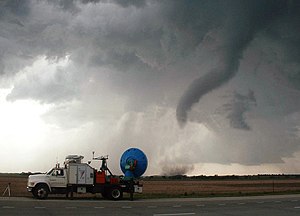Tornado season is here. Time to review your insurance policies’ coverage and limits.
Tornado season is right around the corner here in the United States. May and June are typically the most active months of the year for tornado genesis across the Great Plains. Tornado Alley, as the nickname goes, sees a very large number of super cell thunderstorms which are perfect producers of violent EF2 or greater tornadoes. The boundaries of Tornado Alley reach from south/central Texas up to northern Iowa and east/west from Missouri to Colorado. Other areas prone to tornadoes in the U.S. include Florida and the Gulf Coast which is named the Dixie Alley and has a relatively high number of tornadoes occurring in the late fall, October through December. As many as 1,200 tornadoes hit the U.S. every year and recent years have shown that as our planet’s climate continues to fluctuate we are seeing even stronger storms and resulting tornadoes. But tornadoes are not limited to just the United States. In fact, tornadoes occur in many parts of the world, including Europe, Africa, Asia, South America and even Australia. These regions are more likely to experience increased tornado potential in parallel to the time of year in which increased solar energy and strong frontal storm systems are the norm for that area. Thus, tornadoes can occur (and do so) pretty much year round on planet earth.
Tornado Damage/Coverage:
Over the past decade, insured losses from tornadoes have ranked second behind losses from hurricanes and tropical storms. Tornadoes can cause extensive damage to your property due to the extremely high wind speeds they generate. Depending on where the tornado ranks on the F-Scale (from 0-5), damage can be anything from a few broken windows and exterior issues or damaged roof, to completely losing your commercial building, business or home. Insurers have been examining the underwriting of reoccurring natural disasters such as tornadoes in the past few years due to a noticeable increase in severity and size of these events. U.S. insurers lost nearly $26 billion on tornadoes and related storms in 2011 which was more than the previous record for tornado related losses. Perhaps the most tragic tornado related event occurred in Joplin, MO in May of 2011 when a very powerful EF-5 tornado took at least 161 lives and injured many more. The tornado caused total destruction of much of the cities’ infrastructure, homes and businesses. And as we’ve seen since the disaster, now almost 2 full years since it occurred, many claims have still not been settled with insurers. Joplin’s total losses from the EF-5 tornado were eventually tallied at upwards of $2 billion dollars.
Property managers and owners should review their coverage accordingly to be sure that the coverage in place is adequate in light of the risks they are exposed to. Full replacement cost coverage is of course ideal, but one should also be informed of the policy’s limits and exclusions, and for business owners, proper business interruption coverage should be in place as well. In Texas (as well as some other states) additional coverage for windstorm or hail damage is available via a special insurance pool called the Texas Windstorm Insurance Association which requires an inspection and certain building standards to qualify. In many cases concerning tornado damage, homes and commercial properties are not insured for their full value, which can leave property owners stuck with the difference of what they are insured for and what their damaged property is actually worth. Insurers in many tornado prone areas do not include windstorm coverage in their common policies due to higher risk of such an event occurring. It is imperative for you as a commercial property manager or homeowner to review your policies’ coverage limits and if needed, purchase additional windstorm coverage for the proper value of your home or property.



